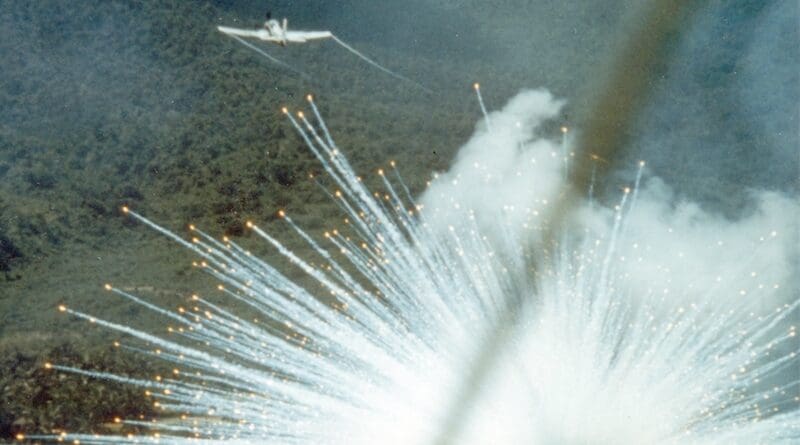15/07/2024
“If you ever come across anything suspicious like this item, please do not pick it up, contact your local law and/or enforcement agency for assistance”
A chemical, called ‘white phosphorus’, is often used to manufacture artillery shells, rockets and bombs. When exposed to oxygen, it ignites and burns at a very high temperature of 815°Celsius. This reaction creates a bright light and thick smoke, useful in military operations. However, this incendiary chemical can result in grievous injuries to any person who comes into direct contact with it. White phosphorus is not considered a chemical weapon because it works mainly through heat and flames rather than toxicity. It can be delivered using felt wedges, or small pads, soaked in phosphorus and has a distinctly ‘garlic-y’ smell.
How Exactly is White Phosphorus Used?
White phosphorus is mainly used to shield the army’s activities on the ground. It creates a smokescreen, both during the day and at night, to conceal the movement of troops. Additionally, it disrupts infrared optics and weapons tracking systems, helping protect military forces from guided weapons, such as anti-tank missiles. When white phosphorus explodes in the air, it covers a larger area compared to when it explodes on the ground. This makes it useful for hiding large troop movements. However, this also means that its burning effects spread over a wider area, which increases danger to civilians in such crowded places as Gaza. On the ground, in case of a white phosphorus explosion, the danger zone is more concentrated as the smokescreen persists for a longer time. The duration the smoke stays in the air depends on the weather, so it is hard to predict exactly how long it will last. White phosphorus can also be used as an incendiary weapon. An incendiary weapon is a type of weapon designed to start fires or destroy sensitive equipment using fire. These weapons use such substances as napalm, white phosphorus, or thermite that can ignite and cause intense burns, spreading fire to targets. Incendiary weapons are also often used to damage enemy supplies, equipment and personnel, as well as to create smoke screens or signal flares. Fires caused by white phosphorus can destroy homes and buildings, damage crops and kill livestock. Additionally, the limited resources available to medical providers in conflict zones make it even harder to treat severe burns. In 2004, during the second battle of Fallujah in Iraq, the US forces used white phosphorus to create smoke and force hidden fighters out into the open, where they were then attacked, even though their use is regulated under international law due to the severe injuries and suffering they can cause.
Photo-Source: eurasiareview.com
If you find anything that appears to be an explosive device, do not touch it, leave it where it is and call the police. We will contact the appropriate agencies to properly dispose of the item.
Biography of a Bomb
Dear editors, Biography of a bomb is aimed at highlighting the danger caused by unexploded bombs. Moreover, the most important aspect is that we work completely non profit, what drives us is raising awerness about this topic. We make use of your pictures and articles, but we need them to put a context in how findings are done. We trust in your understanding. We will (and we always do) cite the source and the author. We thank you for your comprehension





